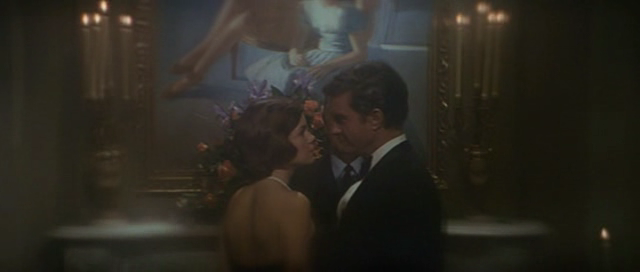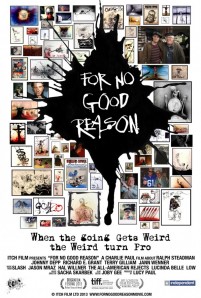'PHANTOM OF THE PARADISE' & 'CARRIE' CITED AS INSPIRATIONS
 The new movie Stage Fright is not a remake of the old Alfred Hitchcock classic, but a slasher-musical starring Meat Loaf and Minnie Driver. It was directed by Jerome Sable, who co-wrote the music with Eli Batalion. In a dual interview with Den Of Geek's David Crow, Sable mentions, among other things, a couple of Brian De Palma films that helped inspire Stage Fright, which is currently available on VOD. Here is an excerpt from the interview:
The new movie Stage Fright is not a remake of the old Alfred Hitchcock classic, but a slasher-musical starring Meat Loaf and Minnie Driver. It was directed by Jerome Sable, who co-wrote the music with Eli Batalion. In a dual interview with Den Of Geek's David Crow, Sable mentions, among other things, a couple of Brian De Palma films that helped inspire Stage Fright, which is currently available on VOD. Here is an excerpt from the interview:GEEK: Speaking of Rocky Horror though, what were the musicals and, for that matter, slasher movies that influenced both of you and then which ones influenced this movie?
EB: It’s interesting, because we love musicals, but we don’t necessarily love all musicals. I wouldn’t describe us as Broadway fanboys. Actually, there’s probably a lot of stuff on Broadway that we violently detest. [Laughs] But there’s a bunch of stuff. Our musical influences, going to more traditional music, certainly Kander and Ebb, some Gilbert and Sullivan as well. We were just talking a little earlier about Lionel Bart.
JS: The guy who wrote Oliver! There’s influences there not only in terms of the music, but also in terms of the directing Carol Reed. Just the kids in the lunchroom at the beginning in the orphanage if you’ve seen that version of Oliver! And of course, there’s then the rock influences.
EB: Which I say is less Rocky Horror—we’re influenced by Rocky Horror in terms of it setting the precedent, but in terms of the specific rock sound, I think that’s more along the lines of AC/DC, Black Sabbath, some Led Zeppelin, some of the vocal stylings of Axl Rose. That’s the stuff we listened to in high school, so it was an interesting combination of combining that stuff with stuff we had accumulated as enjoyers of music since our teens, and to then throw them together in one film.
GEEK: I felt the whole thing had a very obvious nostalgia for the 1980s. The slasher elements were very Friday the 13th and also Carrie—though that’s the ‘70s—but also the musical that it was most parodying was Phantom of the Opera. I bring that up to ask do you have a love/hate relationship with some of this genre? Because you say Led Zeppelin, and I hear Van Halen in “Metal Killer.” People who listen to Van Halen probably did not like Andrew Lloyd Webber in the 1980s.
JS: Yeah, it is love/hate. It’s like our love letter and it’s also like hate mail. So, it’s our love/hate mail to musical theatre. But here’s the thing, Andrew Lloyd Webber does <>Jesus Christ Superstar, which in itself was more of a rock musical. And then he chose to do his version of Phantom, which is intentionally, and I think he would admit this, high on the cheese factor, high on the romance. He just wanted to take what essentially is a slasher story, because it’s about this guy who offs people in a theatre one-by-one, and takes a slasher and says, “Let me do a slasher completely dripping with romance!” And oozing with this sort of red rose [imagery]. And I think he’d admit that’s exactly what he did. I think on their first draft of the music and lyrics, he thought it was just too haunting or serious. He’s like “let’s just make it more romantic.” Sure Andrew, we can do that.
So, he’s done that, and then we said, “Okay. What about dialing it the other way and making it just more brutal, but also with a sort poking-jabbing at the belly of the beast.” Because of course, it’s such an iconic—when I was young, my mother took us to see Phantom, and the chandelier fell, and it was a hugely impressionable moment. “Oh shit!” [Laughs] So, it makes an impact whether you love it or hate it, it’s a huge part of our culture, which is his take of that story. And by the way, in prepping for this movie, we went back and watched the original movie, the 1925 Phantom of the Opera, and also Brian De Palma’s take, Phantom of the Paradise, which people may not remember [precedes] Andrew Lloyd Webber’s take on the Gaston Leroux story.
EB: I guess a lot of people have done that story.
JS: Yeah, even Dario Argento did one. Even Freddy Kruger himself, the actor Robert Englund, was in a weird version of Phantom of the Opera.
GEEK: To transition a little to the slasher movies, which slasher movies really influenced this? For example, I think you used a lot of in-camera effects for the gore.
JS: Yeah, to your point about there being a lot of nostalgia for the ‘80s and the late ‘70s, yes, there is. I just think those are awesome movies and to name a few others like Black Christmas from ’74, and of course Halloween from John Carpenter, as well as Nightmare on Elm Street, Carrie, Texas Chainsaw, and also Hellraiser. But even the Dario Argento movies, the Giallo, movies like Opera and Susperia; these movies that take place with the ballerinas and opera singers. It’s cool to mix high-class theatre and opera with low-class slashing.
GEEK: Was it hard to get them to sing or lip-synch with all the fake blood splattering around?
JS: They were really singing! We did all live-singing. That was another thing that was tricky to do in-camera singing and in-camera effects. Once we had our cast, they were so talented they could nail it over and over again, being of that theatre ilk and having those chops. But like you say, practical effects take time, and you can’t control splatter, as much as you would like to, so you’d just have to take your time and go again. There was stuff that could go wrong, and it was a complicated shoot, to say the least.
GEEK: Why did you approach it with live-singing as opposed to pre-recorded music?
JS: Same reason as the gore. The results that you get have a certain grit and texture, whether it’s live-singing or in-camera gore. We talk about the splatter. With CG blood splatter, the gravity just never quite looks or feels the same. And maybe you only perceive it on a subconscious level, but if something is fake, it might just feel fake. It is the same with singing. You may not know it, but you feel that you connect more to the character, because it was just what they did in that moment. That’s the result part of things. The other is when you’re on set, having the actors not only singing then and there, but also get splashed with something or see something, that just affects their whole emotional performance. It is throwback, but is also just better in general, I find, to do as much as you can in-camera. It just brings more out of the people then and there.
EB: When you have a canned musical like Singin’ in the Rain, and you can tell that they’re clearly not singing, as a viewer and an enjoyer that takes you out of the moment. It’s very distancing.
JS: Imagine this whole interview was lip-synched, and we weren’t saying what we’re saying.
EB: But we’re still saying these things, but it’s pre-recorded. That would be weird.
'STAGE FRIGHT' REVIEWS
The Black Saint, HorrorNews.net
"As I watched Stage Fright I couldn’t help but notice a lot of similarity to De Palma’s Phantom Of The Paradise and I wonder if that wasn’t intentional either. A few times I recognized some shots seemingly lifted part & parcel from De Palma’s film. There’s also a nifty little Carrie (1976) homage (another film directed by De Palma) near the end of the film that made me wonder how much of a BDP fan Sable actually is."
Clayton Dillard, Slant Magazine
"If one didn't know any better, Stage Fright might appear to be some sort of explicit homage to Brian De Palma, loosely held together by post-Scream clichés. At least, the litany of references to De Palma's cinema would suggest as much: a roaming, tormented killer amid a musical production like William Finley from Phantom of the Paradise; a bucket of blood straight out of Carrie; and a power tool in desperate need of an outlet, à la Body Double. The similarities end here, however, as Jerome Sable's debut feature couldn't be further from De Palma's delirious cinematic essays on vision and genre. Instead, Sable operates under the most requisite notions of intertextuality, blankly referencing and parodying far better, more exuberant films less as a form of revision or reflexivity than to engage a pop nihilism that has characterized numerous Scream imitators over the last two decades."
Patrick Bromley, F This Movie
"Like so many up and coming horror filmmakers, Sable loves horror and gets a kick out of paying homage to the films that inspired him. Sometimes, it's a heavy-handed and obvious nod to Brian De Palma's Carrie; other times, it's a fun little throwaway reference to The Texas Chain Saw Massacre. The greatest influence on the film, however, is the Italian giallo film; from the mystery of the masked murderer to the over-the-top brutality of the kills, Stage Fright is steeped in the look and feel of that subgenre. Even the poster looks like an '80s giallo.
"Stage Fright feels distinguished from almost anything else in horror. The songs probably help, but so does the setting and the energy with which Sable stages everything. I can't wait to program my 24-hour horror marathon in October, because Stage Fright is definitely getting a spot. It's the perfect movie to break up the monotony of a marathon -- it's incredibly entertaining, very much its own movie and still delivers the goods when it comes to the horror (the gore is over the top in the best way). While Stage Fright is never going to be my favorite musical horror -- Phantom of the Paradise cannot be topped -- it definitely earns a spot near the top of the list. I smiled the whole way through and wanted to watch it again as soon as it ended. This movie is too much bloody fun."
Frank Scheck, The Hollywood Reporter
"Playing like a very special slasher film-themed episode of Glee, Stage Fright mixes horror and Broadway –style show tunes to decidedly mixed results. While this sort of stylistic hybrid has worked in the past—The Rocky Horror Picture Show and Brian De Palma’s Phantom of the Paradise being two eminent examples—Jerome Sable’s directorial debut lacks both the anarchic wit and musical chops to make it anymore more than the sort of horror film curiosity best seen on late night cable television. Despite Meat Loaf’s hammily entertaining turn as the desperate owner of a musical theater summer camp, the film fails to live up to its obvious inspirations."
Ben Kenigsberg, New York Times
"The shoddy plotting — Did the mother’s murder go unsolved? Does the siblings’ adoptive father (Meat Loaf) run the camp single-handedly? — is just pretext for Brian De Palma-esque pastiche, including a killer who sings heavy metal. Give the movie some zip, a few memorable songs and a stronger third act, and (to paraphrase Mr. Sondheim) something good’s just out of reach.
Updated: Monday, May 12, 2014 10:11 PM CDT
Post Comment | Permalink | Share This Post





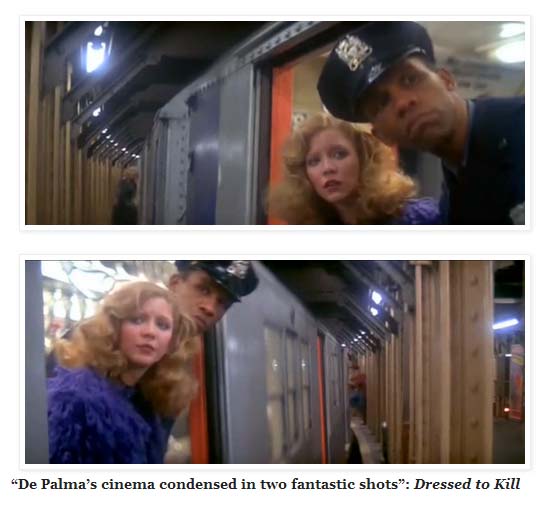


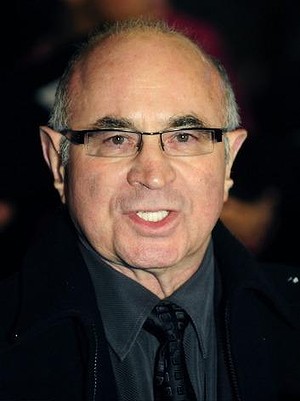 Bristish actor Bob Hoskins died Tuesday after being treated for pneumonia. He was 71. In 1986, Hoskins was signed by Paramount to play Al Capone in Brian De Palma's The Untouchables. However, De Palma had been talking with Robert De Niro about playing Capone, and once De Niro finally committed, Linson asked the studio to pay Hoskins his full salary, which some stories report as $200,000, and others report as $300,000.
Bristish actor Bob Hoskins died Tuesday after being treated for pneumonia. He was 71. In 1986, Hoskins was signed by Paramount to play Al Capone in Brian De Palma's The Untouchables. However, De Palma had been talking with Robert De Niro about playing Capone, and once De Niro finally committed, Linson asked the studio to pay Hoskins his full salary, which some stories report as $200,000, and others report as $300,000.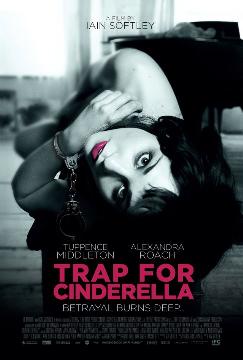
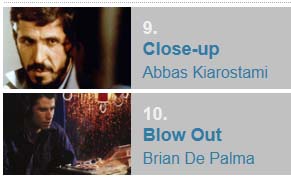 James Schamus, who has worked as screenwriter and producer on several Ang Lee films, among others, submitted a
James Schamus, who has worked as screenwriter and producer on several Ang Lee films, among others, submitted a 